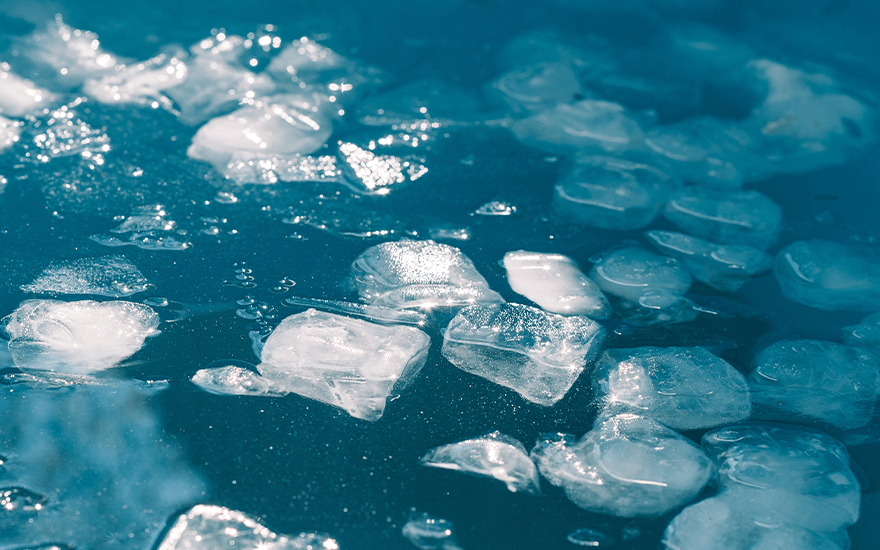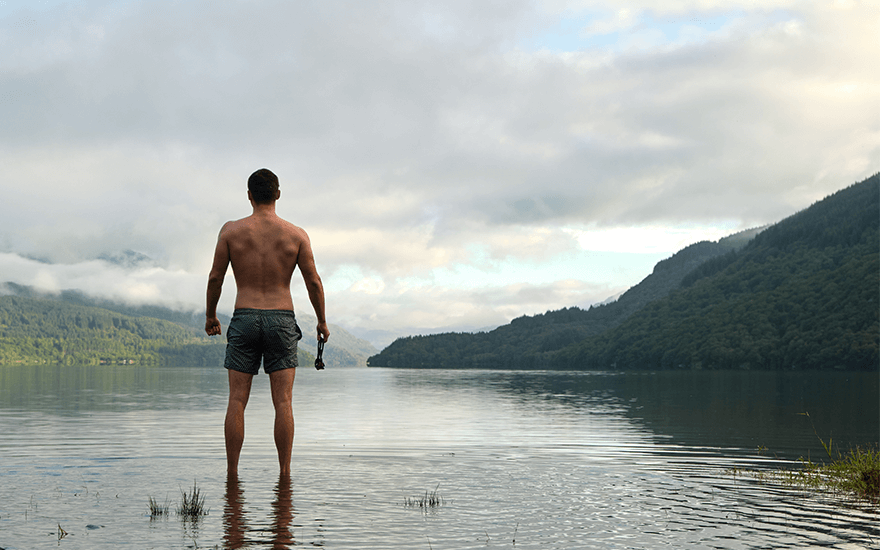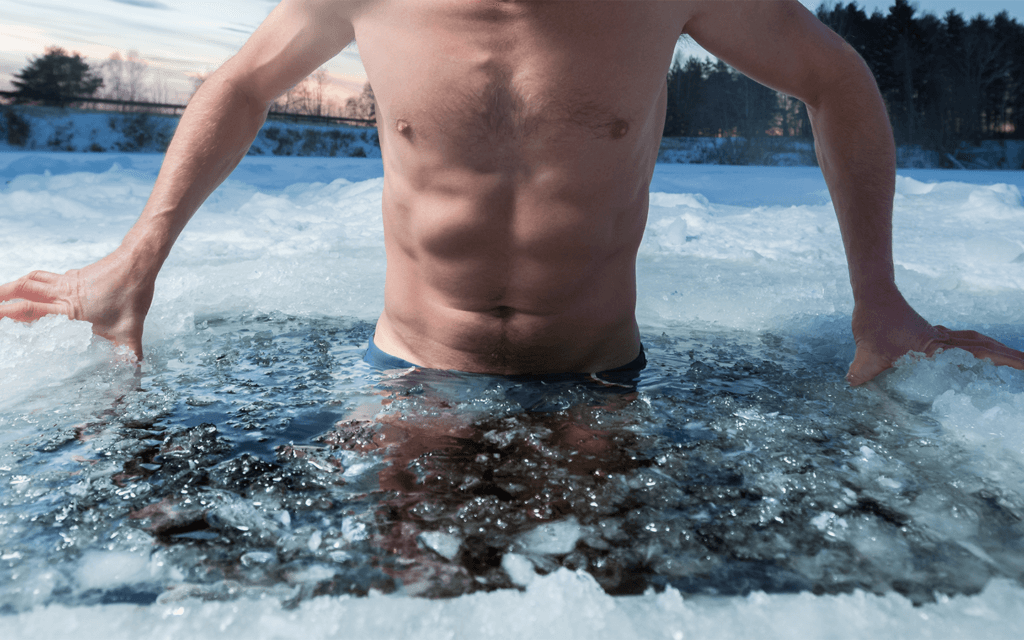During the cold winter months of January and February, it is easy to enter a state of hibernation and put your health on pause. The cold, wind, rain and snow mean that runs or nature walks might be slightly less tempting than in summer.
However, the cold may be your greatest ally in improving your mental, physical and spiritual health.
This is where cold water therapy comes in…
You’ve probably heard of cold water therapy, an increasingly popular trend made famous by practitioners like Wim Hof and countless celebrity advocates.
But you’re probably wondering if cold water therapy is just a fad or if it does provide the transformative health benefits claimed by many health experts.
Jumping straight into a freezing shower isn’t give you many answers.
If you don’t understand the basic science behind cold water therapy, you can negatively shock your body and put yourself off the practice for life.
Instead, it is best to learn why you should be doing it and how to slowly increase your exposure to the cold.
Naturally, the enormous shock to the system it provides puts many people off cold water therapy. You never get entirely accustomed to freezing temperatures, no matter how often you expose yourself to them, which can make it easy to quit if you’re not committed to your cold therapy regime.
What is cold water therapy?
So, what exactly is cold water therapy?
| Simply speaking, cold water therapy is when you immerse your body in ice-cold water for extended periods to destress, improve your health and sharpen your focus. |
The water temperature used in cold water therapy can vary, generally around 50-60 degrees Fahrenheit (10-15 degrees Celsius).
How you immerse your body in cold water is up to you, you can:
- Take a cold bath or shower
- Ice baths
- Cool swimming pools or outdoor lakes
Although cold water immersions are most convenient in your bath or shower, swimming outdoors in nature can have additional health benefits (although you’ll have to take additional safety measures).
Most people spend a few minutes in the cold water, although more committed individuals immerse themselves for longer. But immersing yourself for a few minutes can benefit your mental and physical health.
Depending on your goals and preferences, cold water therapy can be done regularly or as a one-time event. However, you must integrate it into your lifestyle – taking part in cold water immersion 3-4 times weekly for the best results.
Of course, even if you only immerse yourself sporadically, you can still enjoy the stress-busting benefits of cold water.
Why do so many people rave about it?
Unless you’ve lived under a rock, you have almost certainly seen cold water therapy mentioned online or even met someone who swears by its health benefits.
You might therefore assume that it is a new-age fad that health mentors have dreamed up to make more money. But in truth, cold water therapy has been around for millennia and used by everyone, from famous athletes to celebrities and even politicians.
One of the earliest recorded uses of cold water therapy was by the ancient Greeks, who believed cold water had healing properties. Later, the Romans also enjoyed cold water therapy – they built dedicated baths that included cold water pools, using them to improve their health regularly.
Cold water therapy has gained even more attention recently, with multiple Guinness World Record holders and health expert Wim Hof rising to fame from his cold-water exploits.
Hof has since built a vast following, teaching people to embrace the cold to improve their mental and physical health and tap into their spiritual side.
The benefits of cold water therapy
But let’s be honest. You’re probably wondering, “is cold water therapy worth it?
Do I want to leap into cold water on a Monday morning?
Believe us, we understand!
Cold water therapy isn’t the most appealing prospect, especially in a colder climate. Just thinking about jumping into a cold shower or lake will likely send a shiver down your spine.

Because immersing yourself in cold water has multiple mental and physical health benefits. It is a proven way to:
- Improve your circulation
- Reduce inflammation
- Boost your immune system
- Reduce stress
- Improve sleep quality
All of these things will have a considerable impact on your overall health.
Moreover, it could give your skin a healthy, glowing appearance, which is especially welcome during dark winter.
However, we’re here to tell you that cold water therapy is worth it, and it’s been used for centuries by various cultures for a reason.
This is everything you need to know about Cold water therapy benefits:
Improves circulation and lowers inflammation
One of the most potent benefits of cold water therapy is that it improves circulation and reduces inflammation.
This is because your blood vessels constrict, which is particularly useful if you have aches and pains. If a part of your body is sore (perhaps from intense workouts), then the cold water causes blood flow to be reduced in the affected area.
It works the same way as an ice pack, reducing soreness and helping you minimize delayed onset muscle soreness.
Why is lowering inflammation significant?
Because inflammation is the body’s natural response to infection or injury and is a crucial part of the healing process.
Unfortunately, chronic inflammation has been linked to several health issues, including stress and anxiety, as well as more severe conditions like cell or tissue damage.
A drop in inflammation can also help people with conditions like arthritis, which is impacted by joint inflammation.
Improved circulation is also thought to help boost energy levels, aid digestion, and even help the brain function more efficiently.
Improves mental and physical resilience
The mental health benefits of cold water are arguably just as powerful as the physical ones.
Cold water therapy can help increase resilience to stress, as it can teach you to cope with and adapt to challenging situations.
By gradually exposing yourself to cold water and learning to tolerate discomfort, you can build resilience and better handle stress daily.
Just jumping in freezing water in the morning is enough to send shivers down most people’s spines.
Going ahead and jumping in gives you an enormous sense of accomplishment before you’ve even put your clothes on in the morning.
Stronger immune system
Cold water therapy can also boost the immune system significantly. Exposure to cold water can stimulate the production of white blood cells, which help defend the body against infection and disease.
The practice has also increased the production of antibodies (proteins that help fight off infections and diseases). Developing a robust immune system makes you more likely to stay healthy and fight off illness.
Stress reduction
Another reason cold water therapy is so popular is because it can help reduce stress and improve sleep quality.
How?
Cold water immersion lowers cortisol levels (the stress hormone), which can help improve sleep and reduce feelings of anxiety and stress. What’s more, you may find yourself buzzing after a cold dip.

This is because cold water encourages the release of endorphins, which are the body’s feel-good chemicals. It gives you a feeling similar to a hard workout or your favorite soccer team winning a game.
Cold water therapy also increases melatonin production (the sleep regulation hormone).
Better skin
Cold water therapy can also have a positive effect on the skin. When you plunge into cold water, your pores tighten, which helps to eliminate greasy skin, acne, and other skin conditions.
It also helps to make your skin glow with a healthy radiance (which is your blood vessels rising to the surface during cold exposure).
Psychological benefits
In addition to the physical benefits of cold water therapy, it can also have psychological benefits.
Cold water immersion can help to improve focus and concentration and increase feelings of calm and relaxation.
Cold water therapy can be especially beneficial for people feeling overwhelmed or stressed, as it can help clear the mind and promote inner peace.
With all of the demands and distractions of modern life, it’s no surprise that more and more people are turning to cold water.
How to incorporate cold water therapy into your routine
At this point, you’re probably wondering how on earth you will make such a brutal experience part of your daily routine.
Like exercise, cold water exposure becomes easier the more frequently you do it. Good habits are about laying out a simple plan and following it consistently.
The easiest way to integrate cold water into your daily routine is to take a bath or shower. To do this, run the cold water tap in your bath or shower and stand under it for a few minutes.
It is best to start with just a few minutes of exposure – gradually increasing the duration as your body becomes more accustomed to the cold water.
Some people find it helpful to do this in the morning to wake up and energize their bodies, while others prefer to do it at night to relax and unwind before bed.
Of course, listening to your body and only doing what you are comfortable with is vital. If you feel lightheaded or dizzy at any point, stop the cold water therapy immediately and go warm up.
Another option is to swim in a natural body of cold water, like a lake or the sea.
Wild swimming is a great way to enjoy the outdoors and get some exercise. However, it is essential to take proper precautions to stay safe, especially during the colder winter months.

Here are a few tips to help you safely start wild swimming in the winter:
Check the water temperature before you get in
You need to make sure the water you are jumping into is at a safe temperature. While your taps at home won’t ever dip below a safe minimum, mother nature is not so forgiving.
Water temperature in rivers or lakes can fluctuate hugely, and you need to ensure it is safe to swim before you get in.
As a rule of thumb, water temperatures below 70°F (21°C) can prove dangerous, as your body will lose heat more quickly in colder water.
You might see Wim Hof diving into ice lakes, but this could be dangerous if you are not accustomed to it.
Wear a wetsuit or dry suit.
To protect yourself from the cold, you might want to wear a wet or dry suit – at least at first.
This is especially vital if you swim in water below 50°F (10°C).
It might not add much to your caveman aesthetic, but it will keep you safe while you grow accustomed to cold water therapy.
Acclimate to the cold water gradually
If you are not used to cold plunges, dip your toes or feet into the water. Once you are used to the sensation, continue immersing more of your body until your whole body is in the water.
Doing this gives your body time to adjust to the shock of the cold and lowers the chances of an adverse reaction.
Of course, once your body is used to a specific temperature, jumping into it with your whole body is best to prevent you from backing out or losing the motivation to do it.
Swim with a buddy
If you are wild swimming, don’t go alone at first. You may be in unnecessary danger depending on how deep and cold the water is.
By swimming with someone else, you have someone to help you if something goes wrong and a voice of encouragement when you first test your limits.
Ready to break the ice?
Cold water therapy boasts countless benefits that can positively impact your physical and mental health and give you a healthier appearance.
Although cold water therapy has risen in popularity in recent years, it is a practice that has been used for centuries. It can improve circulation, reduce inflammation, boost the immune system, reduce stress, improve sleep, and positively affect the skin, to name just a few bonuses.
Now it’s time to take a brave pill, turn the tap to cold and experience the benefits for yourself.
Related Articles
Hyperbaric Oxygen Therapy- What exactly is it?






